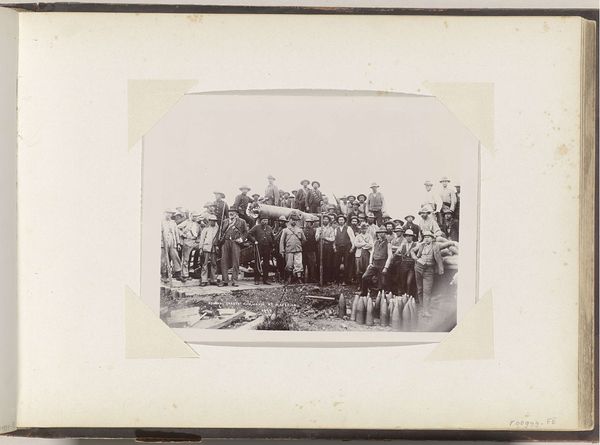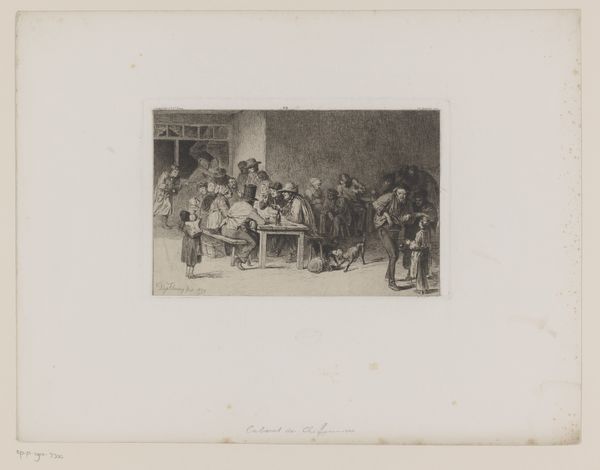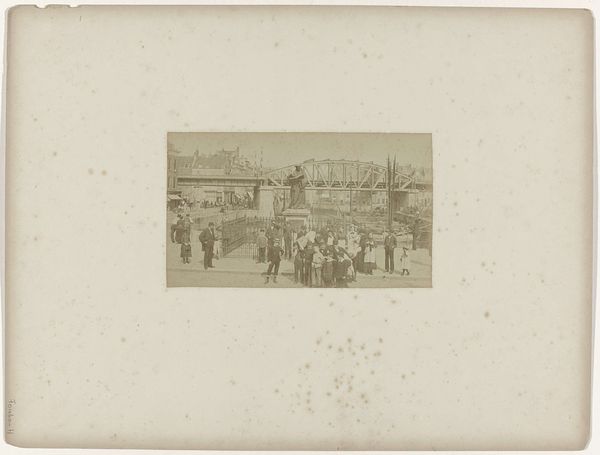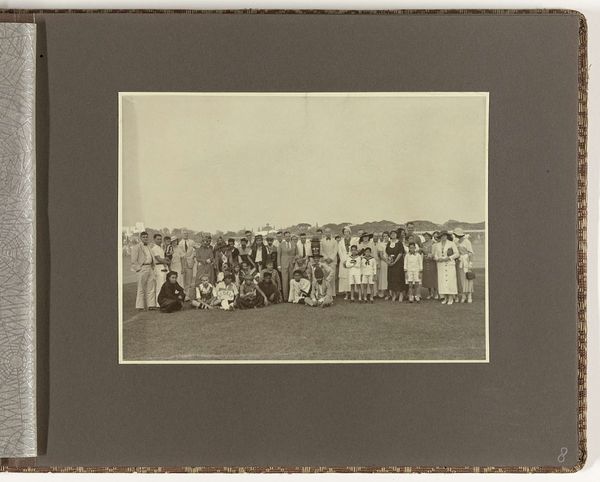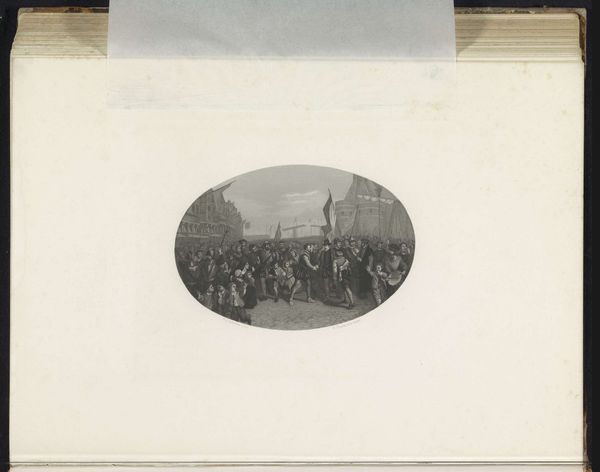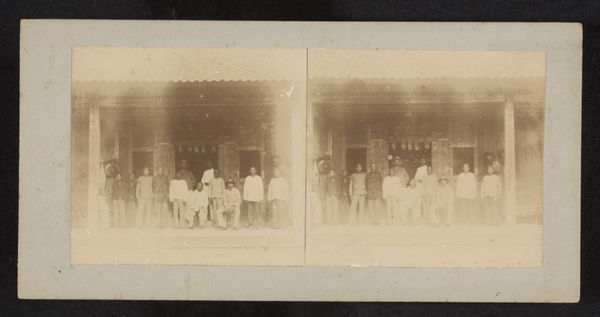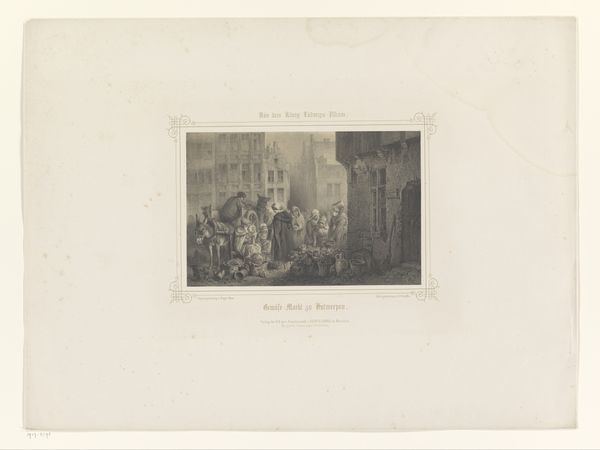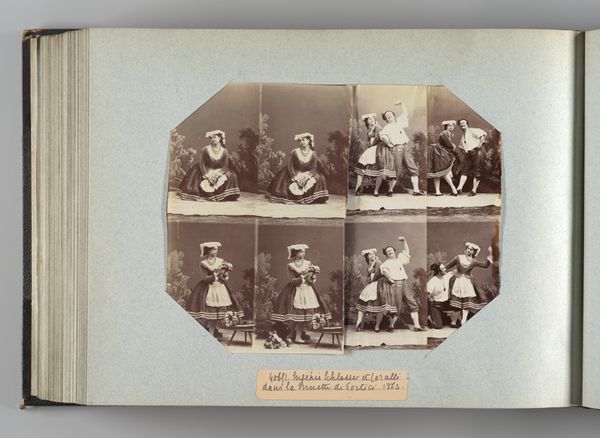
Javaanse hoofden met hoofddignitarissen van het hof van Djokja. 1876 - 1884
0:00
0:00
photography
#
portrait
#
asian-art
#
photography
#
group-portraits
#
realism
Dimensions: height 22.1 cm, width 27.6 cm
Copyright: Rijks Museum: Open Domain
Curator: This fascinating photographic print, titled "Javaanse hoofden met hoofddignitarissen van het hof van Djokja," or "Javanese Heads with Chief Dignitaries of the Court of Djokja," was created between 1876 and 1884 by Herman Salzwedel. Editor: It strikes me immediately as quite rigid, almost theatrical in its arrangement. The figures are posed with a pronounced formality. The composition feels intentionally balanced, but somewhat lifeless. Curator: That rigidity speaks to the specific role portraiture played in colonial documentation. These dignitaries of the Djokja court are being presented within a particular power dynamic, their identities both preserved and subtly reinterpreted through a Western lens. The triangular white headwear creates a striking pattern. Can you decipher any significance in that repetition? Editor: Certainly. It directs the eye, creating a visual rhythm. The artist clearly wants the gaze to move methodically across the image, drawing connections between each individual. Also, note how the tones and textures serve to highlight their regalia and distinct garments. It seems to be trying to show both uniformity and differentiation among the subjects. Curator: Exactly! Each headdress and garment is specific to rank and status. Observe how they are subtly individual, even with their consistent forms, implying both adherence to tradition and asserting specific power. These items functioned as symbolic markers. What of the background itself? Editor: The veranda backdrop, I would argue, furthers the notion of a constructed, theatrical space. Its blurred quality also isolates the figures from anything deeply natural or organic; the photograph seems carefully controlled in every aspect. It lacks spontaneity. Curator: Precisely! The figures are physically separated from their wider cultural landscape. I feel this highlights both a desire for understanding a cultural system and simultaneously placing that system under observation. This photograph is very powerful and nuanced in what it reveals of cultural memory. Editor: Indeed. The formal elements are undeniably crucial for understanding not just what is presented, but how it is presented and the power relations embedded within the image itself. It reveals its layers slowly with its stark tonal palette and rigid composure. Curator: Reflecting on our observations, this image speaks not only to the subjects it portrays but also to the lens through which their stories are constructed and communicated. It reminds me to examine closely both image and intention. Editor: And to consider how a visual object, carefully arranged and exposed, reveals as much through what is depicted as through the decisions underpinning its creation.
Comments
No comments
Be the first to comment and join the conversation on the ultimate creative platform.

